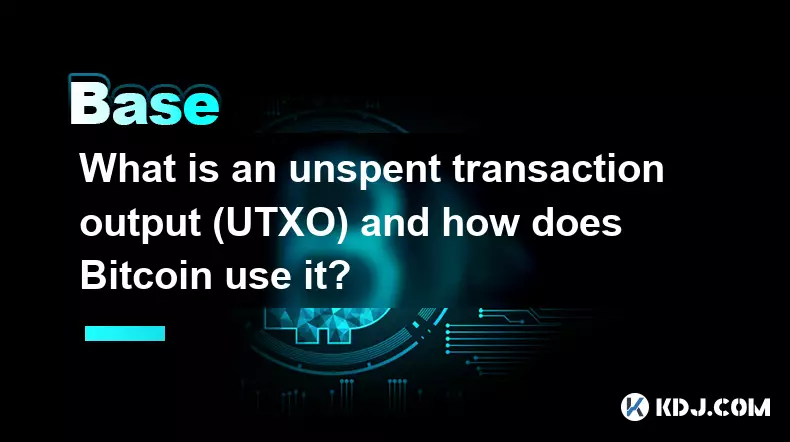-
 bitcoin
bitcoin $95203.028270 USD
-4.12% -
 ethereum
ethereum $3151.730711 USD
-1.61% -
 tether
tether $0.999170 USD
-0.04% -
 xrp
xrp $2.273039 USD
-1.55% -
 bnb
bnb $924.288432 USD
0.14% -
 solana
solana $141.112899 USD
-2.02% -
 usd-coin
usd-coin $0.999964 USD
0.02% -
 tron
tron $0.293976 USD
0.82% -
 dogecoin
dogecoin $0.160772 USD
-1.84% -
 cardano
cardano $0.506357 USD
-3.90% -
 hyperliquid
hyperliquid $37.900515 USD
0.03% -
 zcash
zcash $644.358451 USD
26.66% -
 chainlink
chainlink $14.062007 USD
-2.60% -
 bitcoin-cash
bitcoin-cash $484.381072 USD
-5.12% -
 unus-sed-leo
unus-sed-leo $9.199874 USD
0.27%
What is an account abstraction (ERC-4337) and how does it improve wallet usability?
ERC-4337 enables smart contract wallets with social recovery, gas sponsorship, and transaction batching, enhancing security and usability in Ethereum.
Nov 12, 2025 at 03:19 pm

Understanding Account Abstraction (ERC-4337)
1. Account abstraction is a protocol-level upgrade in Ethereum that redefines how user accounts interact with the blockchain. Unlike traditional externally owned accounts (EOAs), which rely solely on private keys for transaction signing, ERC-4337 introduces a new framework where smart contracts act as wallets. This shift enables users to customize transaction validation logic through code rather than being limited by cryptographic signatures alone.
2. The core of ERC-4337 lies in its implementation of UserOperations, a specialized data structure representing intended wallet actions. These operations are not raw transactions but higher-level requests processed by a decentralized network of bundlers and paymasters. Instead of sending signed transactions directly to the network, users submit UserOperations to a mempool dedicated to these abstracted actions.
3. A critical component of this system is the EntryPoint contract, a singleton smart contract responsible for coordinating the execution of all account-abstraction-based transactions. It validates UserOperations, ensures correct payment handling, and invokes the appropriate logic within the user’s smart contract wallet. This central coordination point maintains consistency and security across diverse wallet implementations.
4. Bundlers play a pivotal role by aggregating UserOperations from the mempool, packaging them into batches, and submitting them as a single transaction to the EntryPoint. This offloads gas payment and transaction construction responsibilities from individual users, enabling advanced features like sponsored transactions and batched operations without requiring changes to the Ethereum consensus layer.
Enhancing Wallet Usability Through Flexibility
1. One of the most immediate benefits of ERC-4337 is the ability to support social recovery mechanisms. Users can define rules within their wallet contracts that allow trusted contacts or multi-signature guardians to assist in regaining access if a private key is lost. This eliminates the all-or-nothing risk associated with seed phrases and makes self-custody more accessible to non-technical users.
2. Multi-factor authentication becomes programmable under account abstraction. Wallets can be configured to require biometric verification, secondary device approval, or time-locked confirmations before executing high-value transactions. These policies are enforced at the contract level, offering stronger protection than app-layer checks that can be bypassed.
3. Transaction batching allows users to perform multiple actions—such as approving a token, swapping it, and depositing the output—in a single click. Traditional EOAs would require separate transactions and confirmations for each step, increasing both cost and friction. With ERC-4337, complex interactions become seamless user experiences powered by backend automation.
4. Session keys enable dApps to perform predefined sets of actions on behalf of a user without repeated approvals. For example, a gaming platform could execute microtransactions during gameplay using a session key with strict spending limits and duration caps. This mimics the convenience of web2 logins while preserving user control and transparency.
Gas Payment and Sponsorship Innovations
1. ERC-4337 decouples transaction fees from the sender’s ability to hold ETH. Through paymasters, third parties can sponsor gas costs for users. This enables use cases such as onboarding new users with zero initial balance, allowing them to interact with dApps funded entirely by the service provider until they acquire assets.
2. Paymasters can also facilitate gas payments in alternative tokens. A decentralized exchange might cover gas fees for traders paying in its native token, effectively subsidizing usage while driving token utility. This flexibility removes one of the biggest barriers to mainstream adoption: the need to manage multiple asset types just to transact.
3. Aggregated fee models become possible when multiple UserOperations are bundled together. Service providers can optimize gas usage across thousands of micro-transactions, reducing per-operation overhead and enabling economically viable machine-to-machine interactions on-chain.
4. Developers gain fine-grained control over cost distribution. In enterprise scenarios, companies can deploy employee wallets where corporate accounts automatically reimburse gas expenses, streamlining internal blockchain usage without exposing employees to cryptocurrency management.
Frequently Asked Questions
What prevents malicious bundlers from censoring UserOperations?The ERC-4337 ecosystem assumes decentralization of bundlers over time. Multiple independent bundler operators compete to include UserOperations, and economic incentives align them with user interests. Additionally, open-source tooling allows anyone to run a bundler, promoting permissionless participation and reducing reliance on centralized entities.
Can existing wallets adopt ERC-4337 without replacement?Legacy EOAs cannot natively support account abstraction. However, many modern wallet providers are integrating hybrid models where users retain familiar interfaces while interacting with underlying smart contract wallets compliant with ERC-4337. Migration is handled seamlessly through proxy contracts and UX abstractions.
How does ERC-4337 impact transaction finality and speed?Finality remains bound by Ethereum’s block confirmation process. While UserOperations introduce additional processing steps—validation, bundling, execution—the overall latency is optimized through parallelized off-chain coordination. End-users typically experience faster perceived responsiveness due to streamlined front-running protections and pre-validation checks.
Are there security risks unique to smart contract wallets?Yes. Since logic resides in mutable or upgradable contracts, vulnerabilities in wallet code can lead to fund loss. However, the ecosystem has adopted rigorous auditing standards, timelock upgrades, and modular designs to mitigate risks. High-profile wallet projects often undergo multiple third-party reviews before deployment.
Disclaimer:info@kdj.com
The information provided is not trading advice. kdj.com does not assume any responsibility for any investments made based on the information provided in this article. Cryptocurrencies are highly volatile and it is highly recommended that you invest with caution after thorough research!
If you believe that the content used on this website infringes your copyright, please contact us immediately (info@kdj.com) and we will delete it promptly.
- Decoding the Crypto Crystal Ball: Will Apeing Outpace XRP and BNB in 2025?
- 2025-11-15 12:25:02
- HBAR, Zero Knowledge, and the Privacy Revolution: What's the Smart Money Doing?
- 2025-11-15 11:40:02
- Crypto Presales Face-Off: Is Digitap ($TAP) Really Toppling BlockDAG?
- 2025-11-15 11:35:01
- Tokenization, 24/7 Markets, and Vlad Tenev: The Future of Finance?
- 2025-11-15 11:30:01
- Bull Market Bonanza: Crypto Presales and Explosive Growth Opportunities
- 2025-11-15 11:25:01
- Crypto Carnage: Navigating Selling and Liquidations in a Wild Market
- 2025-11-14 16:50:01
Related knowledge

What is the difference between a transparent and a shielded transaction?
Nov 10,2025 at 05:59pm
Understanding Transparent Transactions in Cryptocurrency1. Transparent transactions are the standard form of transaction on most public blockchains li...

What is a "crypto airdrop farmer" and what strategies do they use?
Nov 09,2025 at 03:39pm
What Is a Crypto Airdrop Farmer?1. A crypto airdrop farmer is an individual who actively participates in blockchain projects to qualify for free token...

What is an unspent transaction output (UTXO) and how does Bitcoin use it?
Nov 12,2025 at 01:40am
Understanding the Concept of Unspent Transaction Output (UTXO)1. An Unspent Transaction Output, commonly referred to as UTXO, is a fundamental compone...

What is a "governance attack" and how can a DAO be compromised?
Nov 14,2025 at 05:59am
Understanding Governance Attacks in Decentralized Autonomous Organizations1. A governance attack occurs when an individual or group gains disproportio...

How do you track a crypto portfolio across multiple wallets and chains?
Nov 12,2025 at 04:19pm
The Evolution of Decentralized Exchanges in the Crypto Ecosystem1. Decentralized exchanges (DEXs) have transformed how users trade digital assets by r...

What is a "rug pull" clause in a smart contract and how can you spot it?
Nov 14,2025 at 11:40pm
Understanding the Concept of a Rug Pull in Decentralized Finance1. A rug pull refers to a malicious act in the cryptocurrency space where developers a...

What is the difference between a transparent and a shielded transaction?
Nov 10,2025 at 05:59pm
Understanding Transparent Transactions in Cryptocurrency1. Transparent transactions are the standard form of transaction on most public blockchains li...

What is a "crypto airdrop farmer" and what strategies do they use?
Nov 09,2025 at 03:39pm
What Is a Crypto Airdrop Farmer?1. A crypto airdrop farmer is an individual who actively participates in blockchain projects to qualify for free token...

What is an unspent transaction output (UTXO) and how does Bitcoin use it?
Nov 12,2025 at 01:40am
Understanding the Concept of Unspent Transaction Output (UTXO)1. An Unspent Transaction Output, commonly referred to as UTXO, is a fundamental compone...

What is a "governance attack" and how can a DAO be compromised?
Nov 14,2025 at 05:59am
Understanding Governance Attacks in Decentralized Autonomous Organizations1. A governance attack occurs when an individual or group gains disproportio...

How do you track a crypto portfolio across multiple wallets and chains?
Nov 12,2025 at 04:19pm
The Evolution of Decentralized Exchanges in the Crypto Ecosystem1. Decentralized exchanges (DEXs) have transformed how users trade digital assets by r...

What is a "rug pull" clause in a smart contract and how can you spot it?
Nov 14,2025 at 11:40pm
Understanding the Concept of a Rug Pull in Decentralized Finance1. A rug pull refers to a malicious act in the cryptocurrency space where developers a...
See all articles









































































